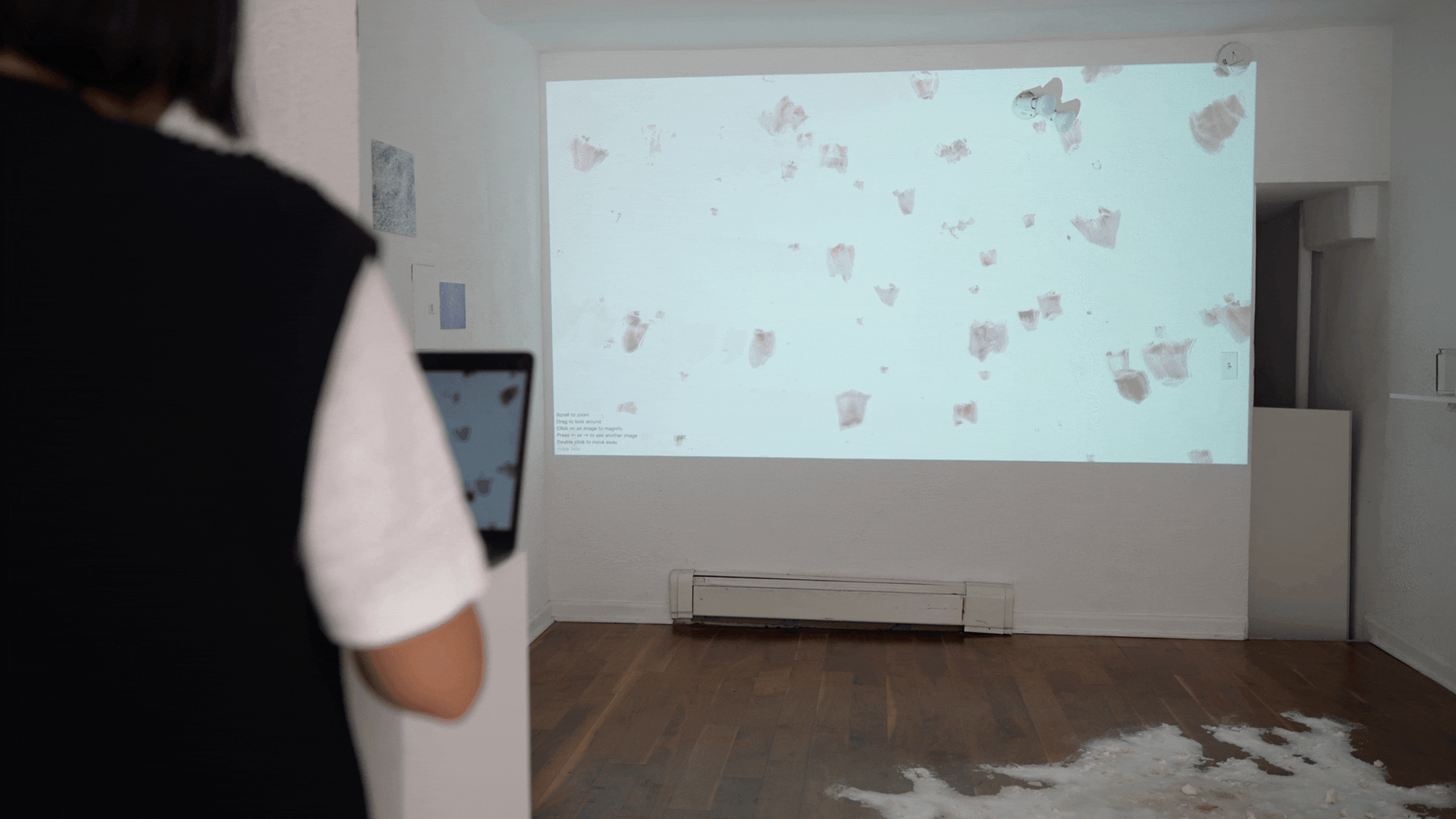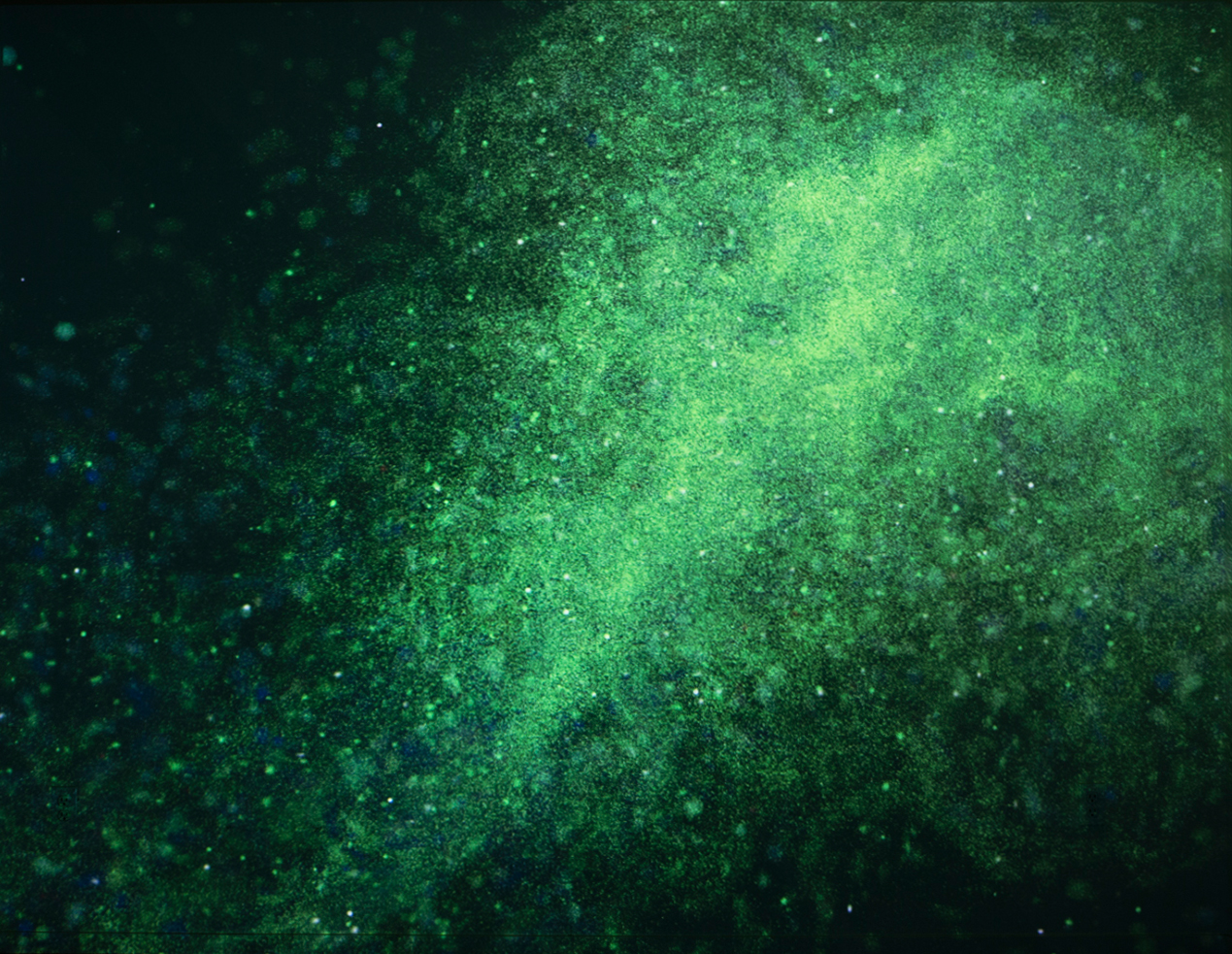:iidrr Interview with Yan Shao
2023 August
Yan Shao
https://shaoyan.art/
Yan Shao is a terrestrial artist and creative technologist based in New York. Yan’s imaginative new media works explore the uncharted territories of perception, mediating the complex interrelations between humans and the environment. Yan's artistic language draws inspiration from geopoetics, the transitory essence of nature, and the human responsibility towards ecology, resulting in a unique and evocative visual narrative. Through her photography, video, and interactive installation, Yan invites viewers on a journey of discovery and reflection, exploring the depth of our connection with the earth.
Your journey started in science and transitioned to art. How has your background in Geology influenced your approach to art?
My background in Geology has been fundamental to my approach to art. It has instilled in me a deep appreciation for the Earth and its processes, and a desire to communicate this appreciation to others in a way that is engaging and accessible. The training in Geology has taught me to perceive the world beyond its surface, and to understand the interconnectedness of elements and events over time. It has also taught me a sense of time that happened on a geological scale, or earth scale, we named it deep time, compared to the human-constructed scale of hours and minutes. For instance, orogenic movements, the processes that mountain ranges raise up, occur over millions of years. They are gradual yet immensely significant and impactful. These perspectives are crucial in my thinking and practice, and the expressive way I choose in my work.
COVID-19 has had a significant impact globally and personally for many. Can you talk about how the pandemic influenced your creative process and the way you approach regional and global narratives?
During the COVID-19, I was preparing for my graduation at San Francisco Art Institute, and of course, the graduation exhibition was canceled. But I didn’t want to give up because the work can’t only be shown physically. So I started researching net art and how websites function as public spaces. During that time, I went to the Salton Sea in Southern California for a field study on place, space, history, and ecology. As I heard news reports of the daily death toll, I observed numerous dead aquatic organisms and birds at the Salton Sea. This contrast prompted me to reflect on human intervention in nature and the massive wildlife deaths, which later inspired me to create a website monument where everyone can come to mourn the biology of life and the spirit of life.
The pandemic made me more conscious of the role of technology in shaping our perceptions and understanding of the world. When we went into lockdown, technology or the internet became our primary means of connection, altering our sense of place and time. This prompted me to think more critically about the ways in which technology is essential in the process of human civilization and inevitable in our daily experiences. Besides, the pandemic raised my awareness of how fragile an idealized concept of globalization, leading me to think more about how regional storytelling is important in preserving diversity and establishing shared knowledge.

Barnacle Beach at the Salton Sea, 2020

Lived In A Sea Monument showed on ZAZ at Time Square, New York, 2020

Lived In A Sea Monument showed at :iidrr, 2023

One Hundred Barnacle, 2020
You have mentioned the Gaia Theory as an influence in your research. How does this theory resonate with your work, and how do you incorporate its concepts into your installations?
The Gaia Theory, proposed by James Lovelock and Lynn Margulis, that Life is a phenomenon that occurred in the earth’s history and has profoundly influenced the conditions for survival and thriving. It is a fascinating concept that helps us to understand the earth as a whole, which has been transformed and inhabited by its copartners, including organisms and other ingredients such as atmosphere, soil, rocks, seas, minerals, etc. It inspires me in my installations that inform a more egalitarian perspective of all organisms and highlight mutual dependencies between humans, organisms, and the environment.
"Autopoiesis" is an audiovisual installation that simulates biomass bloom. What are the visual and sound represent and can you elaborate on the inspiration behind this work?
The project is a computational simulation of algae bloom, an environmental hazard in today’s world, yet also a representation of vigorous biological reproduction process. It is inspired from an ancient organism, cyanobacteria, who dominated the Great Oxidation Event and transformed the earth from an anaerobic to an aerobic atmosphere around 2.5 Ga(billion years) ago. It is one of the most vibrant organisms that can double themselves in a day. Though people often associate trees when towards a greener planet, it is actually cyanobacteria and its variable descendents floating in water, that assimilate most carbon dioxide and produce 70% oxygen of the earth. My aim with this project is to render this behavior more visible and to question human’s essential reliance on oxygen and our connection to organisms that often go unnoticed in our daily life.



Autopoiesis, 2021
"Algae Chorus" is a sound installation that collaborates with living algae. Why do you want to use living algae and any technical challenges you faced while creating it?
This project is the continuation from “Autopoiesis”, as I want to create a more sensual and interactive experience to discuss the broader group of organisms - algae. Algae has become a popular biological subject recently, being a biomaterial for industry and the potential biofuel factory. However, these approaches often carry an anthropocentric perspective that treat algae as resources rather than incredible creatures we humans actually heavily rely on. Facing the climate emergency, it is crucial to reimagine algae’s role in the carbon cycle and recognize its importance beyond its utility to humans. For this installation, I chose three different species of algae that inhabit different aquatic environments: single-cell cyanobacteria: Spirulina, microalgae: Nannochloropsis, and Chlorella Vulgaris.

Algae Chorus, 2022
In this installation, I employed 24 light sensors with LEDs to sense algae’s movements, and a carbon dioxide sensor to measure the gallery’s CO2 level. All of these were run on a Raspberry Pi. The physical computing part has many challenges, as I assemble and solder components myself. I spent a lot of time debugging the programming and resolving compatibility issues between different parts, as some ports and interfaces on the Pi did not work together.
test sensors
all parts assembled together in the gallery
Raising algae also has a little challenge at first as they all need different base and light conditions. But after a period of caring, I gradually learned how to keep them alive and thriving. This installation aims to create an engaging listening experience and open a discussion on our relationship with organisms living on the earth toward a sustainable future.
algae live in Yan’s apartment
Your project "Left To Feel That Wind" explores the perception of deep time and human time through the transformation of the Great Salt Lake. How did you come up with this concept, and what message do you hope to convey through this installation?
I visited the Great Salt Lake in the winter of 2022, during which the lake had significantly shrunk and was at its lowest water level. During my field study, I discovered that its extension, the Bonneville Salt Flat not far away, shared the same landscape, the Great Basin. The dried salt flat was once a vast lake before the last Ice Age. The vast and beautiful landscape inspired me to recreate this installation in-situ to discuss the transition of time and space and how climate change, as a radical transformation, has been accelerated by human impact.
“Left To Feel That Wind” emerged from my personal experience and reflections on the deep time versus the industrial time scale we get used to. This installation provides a shift in perspective through the material composition and spatial-scale of work - from a human view of time to a more earth view on the progressive evolution of inert matter and the delicate balance of the Earth.


Road Trip to the Great Salt Lake, 2022

Left To Feel That Wind, 2023
Throughout your career, you have blended science, technology, and art to create a bridge between humans and the Earth. How do you see the role of technology evolving in your future works?
Technology will continue to play a crucial role in my future works, as we are living in an era of technology which has profoundly influenced our perception and understanding of the world. The key is how to use technology. Instead of using it as a tool for control and surveillance, I’d like to imagine it to create experiences that enhance our sensory perception, and manifest abstract scientific knowledge in an accessible way, which is my goal how it could function to foster a deeper connection between humans and the earth.
What are your future plans? What are some themes or concepts that you are excited to explore in your upcoming projects?
My next project may relate to the ecological dynamics of estuaries. Since I have lived in New York for two years, I find myself drawn to the Hudson-Raritan Estuary. Estuaries are fascinating because they are transitional zones where saltwater and freshwater meet, symbolizing the junction of land and ocean. They provide insights into the interconnectedness of the earth and civilization, and serve as a metaphor for the ways in which different systems interact and influence one another. I would like to explore more how Hudson-Raritan Estuary has evolved into a rich ecological system and how it has nurtured one of the most diverse cultural hubs - New York.
Recently, I presented “Algae Chorus” at the 28th International Symposium on Electronic Art(ISEA) in Paris, where I met many people discussing various aspects of art and science, from soil, mycelium, bacteria, squid, glacier to alternative cosmology perspectives. Moving forward, I want to explore more residency and presentation opportunities, forge connections with broader intellectuals, researchers, and artists, who I would love to collaborate and work together to envision a shared future.

